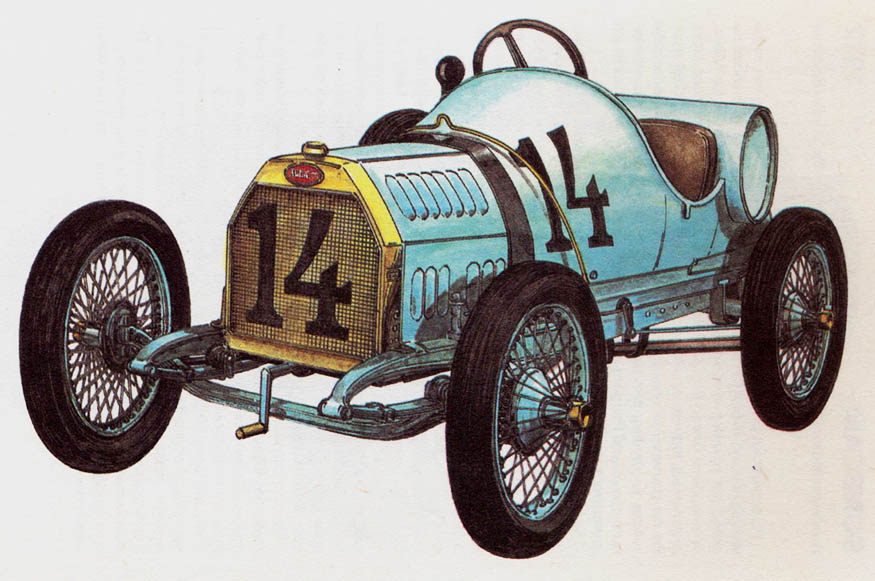BUGATTI 13 – year 1911
Automobiles E. Bugatti, Molsheim, France.
Due to the lack of interest from major car companies, French automobile club in the years 1910 i 1911 he did not organize Grand Prix ACF races. Only the French Grand Prix was allowed to be announced on the newly built track at Le Mans. These races, organized by the Automobile Club de la Sarthe, cars with a capacity not exceeding 1400 cm3.

Automobiles E. Bugatti, Molsheim, France.
It was in this group of vehicles that the winner was the car designed in 1909 year by the extremely talented constructor Ettore Bugatti, while he was employed at the De Dietrich factory in Alsace as a technical advisor. Bugatti 13 had a four-cylinder engine with a capacity of 1327 cm3 at the bore of the cylinders 65 mm with the stroke of the piston 100 mm and OHC valve timing. There were two vertical valves in each cylinder, controlled by a single camshaft. The cylinder block with the heads was made of a single cast. The crankshaft rotated in three slide bearings. The drive was transferred from the engine to the four-speed gearbox by means of a multi-plate wet clutch, and then over the propeller shaft onto the rigid rear axle. The engine was making power 18,4 kW (25 KM) by 300 RPM. The steel frame was hung on the oblongs, semi-elliptical leaf springs. Model in racing version 13 it had a ground clearance only 1150 mm. The lightweight body with the chassis had a total weight 310 kg, which made it possible to achieve relatively high speed 140 km/h.
Bugatti 13 was first exhibited at the Paris Motor Show in 1910 year. For its production, as well as for further orders of some companies (De Dietrich, Deutz, Hermes), Ettore Bugatti established his own workshop in Molsheim. Ernest Friedrich, which in its class led a Bugatti car with a bib number 14 victorious to the finish line in 1911 year, he also took second place in the overall ranking behind the absolute winner Hemery, driving a ten-liter Fiat.